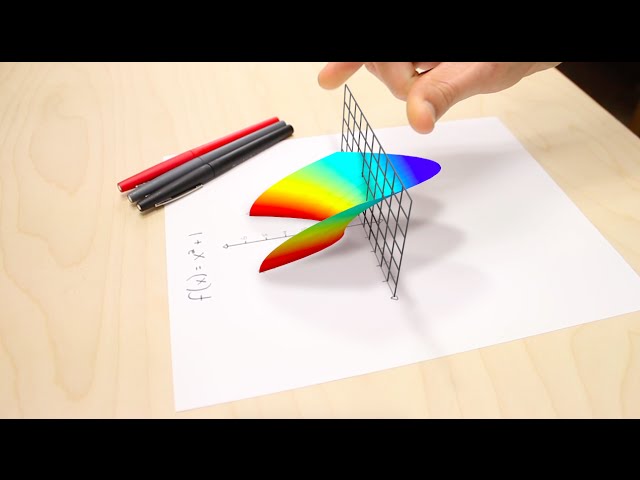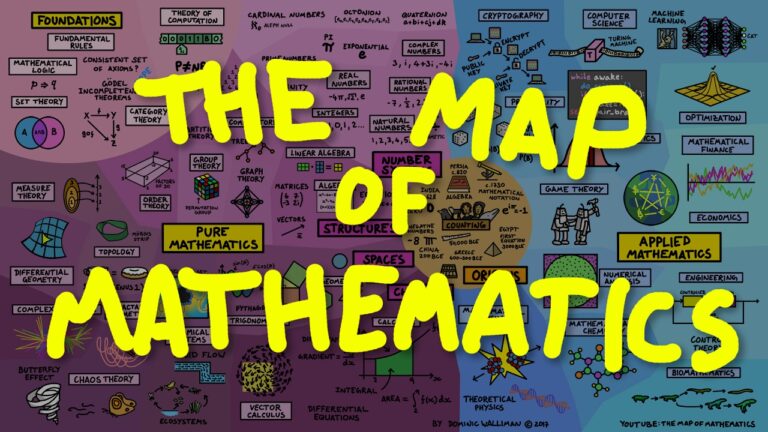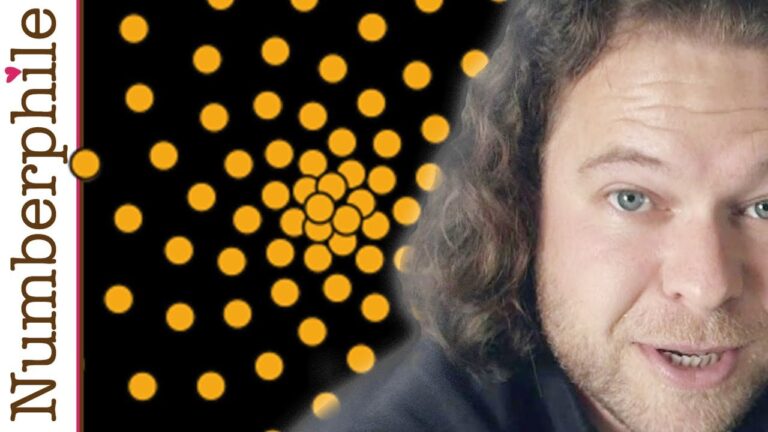What Is The Fourth Dimension?
A presentation based on Edwin A. Abbot’s Flatland: A Romance of Many Dimensions.
“Our current perception is an excoordinate system where each axis points along, banning what we know as three-dimensional space. But what is the fourth dimension?
After all, we as human beings define our reality by the three spatial dimensions that we occupy along with an additional
temporal dimension, which we move along in a single direction from birth until death. It’s these four dimensions that we can understand and even visualize, but time is not what we will be investigating here.
We will be looking at something much less intuitive and much more complex. This is not time with a fourth spatial dimension–a dimension that we cannot touch see or even enter–but at the same time exists all around us. It’s a mystery, and we can only begin to uncover it by first developing a unique perspective on what space actually is.
And so we will start our journey on this two-dimensional claim called flatland, a place inhabited by two-dimensional creatures we will call Flatlanders. These ‘Flatlanders’ exist entirely within two dimensions–the x and y space and for them there is no z-axis no third dimension because the z-axis extends into a direction perpendicular to their reality–a direction that they cannot move or see into or even draw so they would surely have a hard time grasping the concept of 3d space just like we find it difficult to conceptualize 4d space
And part of the reason for that difficulty is that in our world, there’s no room for an extra dimension in flatland. You can move left and right forward and backward but that’s all moving in a new direction would be moving out of reality–which is impossible because reality is reality and telling a flatlander to move up and down would be meaningless since they have no concept of up or down.
We, on the other hand, know it’s there because we live with those directions but we face the same problem in our world we have left and right forward and back and of course up and down but to travel to the fourth dimension we need to move somewhere else somewhere that’s
perpendicular to all three of those directions inward and outward, perhaps directions that mean nothing to us but we know must exist in a four-dimensional world.
So if we can’t physically go into the fourth dimension or even peek inside to know what it looks like, can we at least know the other way around what would our world look like from a fourth-dimensional point of view before we answer that let’s first look at how Flatlanders see since both live in a two-dimensional plane, all they are able to see or one-dimensional projections of the shapes moving around
and their world, for example, a circle and flatland would look like a line when the circle moves towards them, a line grows and when it moves away, it appears to shrink.
if Flatlanders can only see lines then, it may seem confusing to us how they can tell one shape from another, but really it’s actually quite simple. Not only do flat liners have depth perception but flat layers also have other senses they can feel by touching the sides of an object a flatlander can figure out how these lines come together in what shape they come together to make.
They can also study a shape from different angles to identify if something is for example a square and really we aren’t much different from the two-dimensional projections of our 3-dimensional world we see shapes. But through our senses we can recognize how these shapes come together and form 3d objects it’s why we can recognize that a cube is a cube by just looking at it.
From a single angle so back to our original question what would our world look like if we could see it from a fourth-dimensional point of view well if Flatland are seen lines make up shapes and we see shapes that make up three-dimensional objects.
Then a four-dimensional creature would see 3d objects that make up hyper objects, so looking at our world through the fourth dimension, we would see the entirety of our world just like we can see the entirety of the flatland plane. In other words, where a flatlander only sees one side of a square, we see the entire square.
And where we see one side of the cube if we looked at that same cube from the fourth dimension we would see the whole cube all six sides all at once.
Thinking in a higher dimension is difficult although it can be done but how do we study the fourth dimension if we can’t physically see it?
How can we possibly understand it and to answer that all we need to do is see how Flatlanders learn about our world. In Flatland, a circle looks like this it can move left and the right, and it can move forward and backward but the circle is restricted to the plane of Flatland.
And now imagine if our flatlander friends were looking at the circle and solving this. To the Flatlanders, it looks as if the circle has shrunk down to a tiny point before disappearing completely.
Then magically reappearing only to grow back to its original size. This would be like seeing a human vanish before our eyes, then rematerialized moments later. There would be no explanation for how this could happen.
What if we told these Flatlanders that this was not a circle but something called a sphere–something that is not circular but round. ssomething that extends into a direction that doesn’t even exist in their reality besides calling you a liar and denouncing our circle over here as a which the flatlander still wouldn’t understand what you mean.
Instead, we can show them projections of our sphere onto flatland and associate the directions of up and down– the way the projections change when objects from our 3d world intersect Flatland.
The Flatlanders see a projection a cross-section of our object. It can move left, right, and forward and backwards just like the two-dimensional shapes and flatland, but it can also move up and down perpendicular to the flatland plane. It’s obvious to us how the projections form a sphere but is not necessarily obvious to the Flatlander.
Now, pretend that you are a Flatlander, and I am going to show you the projections of some unknown objects. And your job is to figure out what the object actually is if you can do it then perhaps our friends and flatland may be able to as well.
It’s interesting how we can picture higher dimensional geometries with so little information. And those examples all we considered were the lower dimensional projections of the 3d objects the only additional information that I gave you was the direction that the object was moving.
And with that we were able to build a mental image of the actual object through a compliation of these slices that we saw so Flatlanders should be able to do the same thing. They can form their own mental compositions of the projections that they see.
And by doing so, they, too can understand what a three-dimensional object is. but why not just immerse them into our three-dimensional world and let them see for themselves literally pick them up off of flatland and bring them into our 3d world. Again, all they would see is a one-dimensional slice like this.
And if we moved him back and forth, they would see the entire 3d object just not all at once but the flatlander has all of the information that he needs to imagine the 3d object for what it is all he has to do is analyze how the projections changed as he was moving back and forth perpendicular to his reality.
He doesn’t need to know exactly what exists in the third dimension. He points what matters is that he knows it exists outside of himself and so to put the pieces of the puzzle together he would have to do it entirely in his mind. Naturally, we would just lay up the slices next to each other but Flatliners can’t do that they left the concept of the next to each other direction.
Instead, they would need to imagine an arbitrary abstract thought space and extrude their memory of the slices into the space in order to recreate the entire image we, as three-dimensional beings, find this task rather easy because we have no problem thinking in three spatial dimensions.
but when we are pulled into a four-dimensional world or if a four-dimensional object passed through our world, then we will understand the struggle of Flatlanders. But instead of 2d slices. we would see 3d slices of a four-dimensional object and never the entire four-dimensional object at once, So these 3d projections would appear to be changing as it moves perpendicular to our reality morphing in ways that we can never imagine.
In fact, I’m sure we’d feel just like the Flatlanders, we may think we are crazy or that these objects are magical or divine, but we, too, can study these projections–remember how they change and extrude that memory into an abstract perpendicular thought.
This is space that we define ourselves and by using the same strategies as the Flatlanders. We can understand what a four-dimensional object looks like. You can see the truth is we are Flatlanders not in the sense that we are flat but in the sense that we face a similar lack of understanding.
The difference is that we have the power of perspective. We’ve seen and understood how Flatlanders can be enlightened with the third dimension and there’s no reason why we can’t generalize that to ourselves.
So together, let’s expand past this three-dimensional space and the marketing journey to the fourth dimension.”





